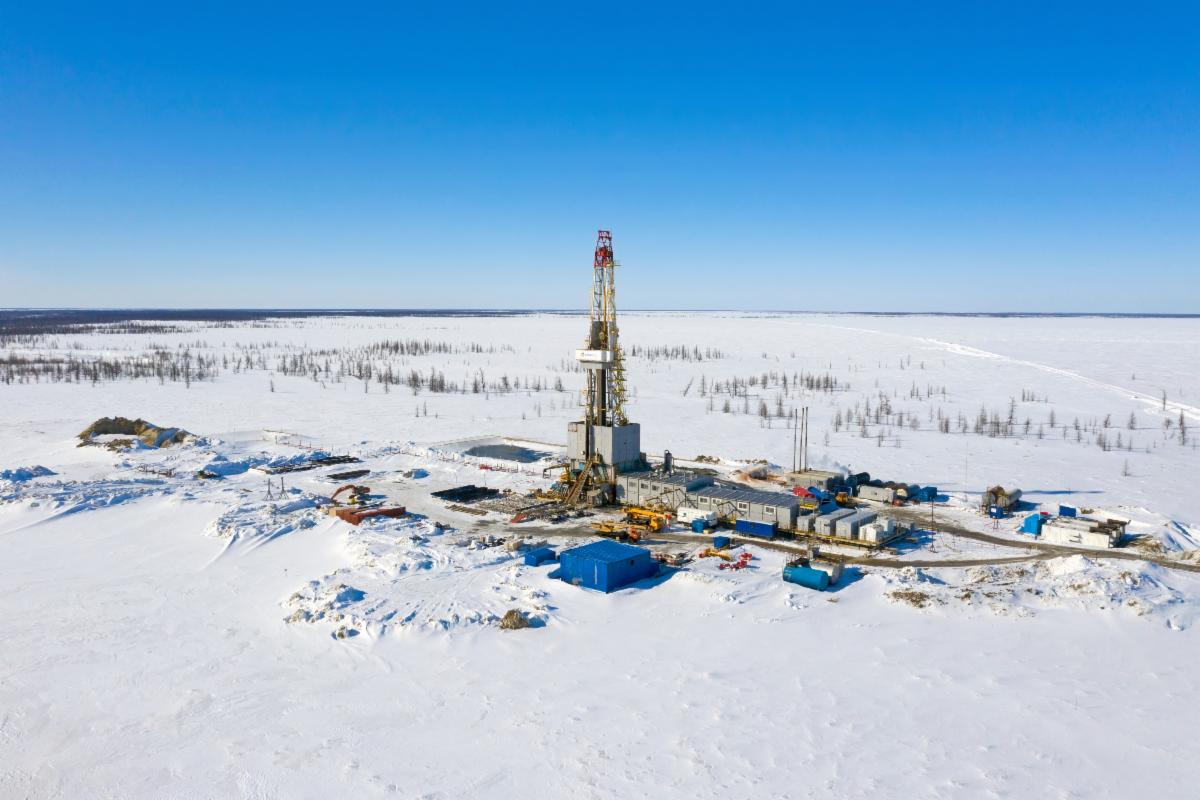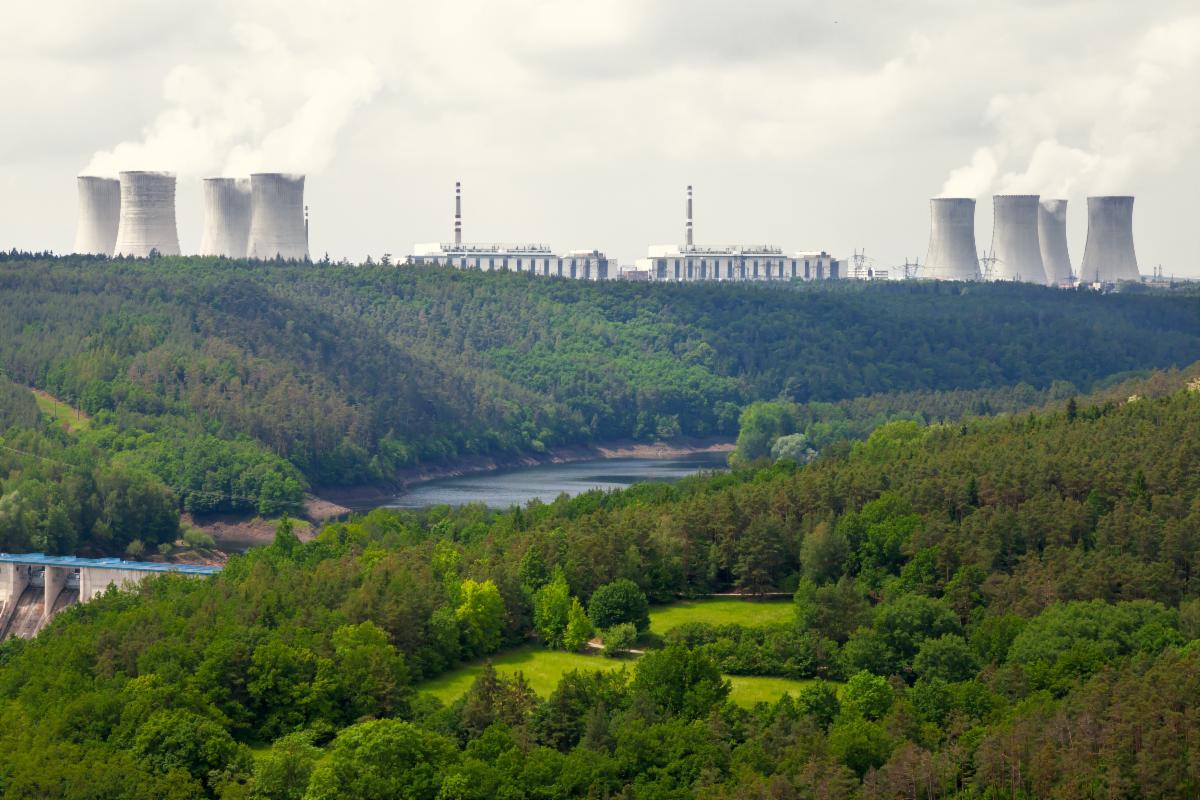Russian Energy Update – April 6, 2023
Russian Energy Update – April 6, 2023
Want to receive future energy updates? Subscribe here.

Russia-China meeting yields $165 billion in deals, but no long-term gas agreement
On March 21, during Chinese President Xi Jinping’s visit to Russia, Russian Prime Minister Mikhail Mishustin and Jinping agreed to $165 billion in investment across 79 projects through an intergovernmental commission. The fund covers transport, energy, and technology development, including cooperation on the Arctic LNG facilities Yamal-LNG and Arctic-LNG 2. Despite Russia’s enthusiasm for increased gas deliveries to China, the leaders’ joint statement lacked hard commitments to either deeper pipeline network integration or the Power of Siberia 2 pipeline, which Moscow has long sought to build.
Why it matters: While trade between Russia and China has grown substantially over the past year, China’s leaders have been reluctant to agree to accept additional Russian natural gas imports. China has pursued discounted short-term oil shipments but is thus far balking at long-term billion-dollar projects like Power of Siberia 2, much to Russia’s disappointment. Likewise, while China has provided technology and investment for some Russian Arctic energy projects including the Yamal plant, the threat of Western sanctions and high investment costs seem to have depressed interest in further expanding Russia’s Arctic energy extraction.
Most important, Russia is far from redirecting gas volumes that previously went to Europe. Russian pipeline natural gas to Europe dropped from 140bcm exported in 2021, to an estimated 26bcm annually, largely to Hungary and Serbia. Russia’s LNG exports grew by about 3.5bcm to 45bcm in 2022; 25bcm went to Europe. Russia exported only an additional 5.1bcm to China in 2022 for a total of 15.5bcm annually, but has made minimal progress establishing new gas contracts with Asian markets like India, which buys most of its natural gas from Middle Eastern states. Indeed, six of Russia’s eight largest sources of natural gas revenue from February 2022 to February 2023 were European. As Europe increases its LNG imports from the U.S. and Qatar to compensate for decreased Russian natural gas, Russia continues searching for willing partners to take its gas.

Russia extends production cut to mitigate price cap impact
On March 21, Russian Deputy Prime Minister Alexander Novak announced that Russia would extend earlier oil production cuts through the end of June. Russia’s Minister of Energy said that lower Russian production would increase prices on global oil markets, allow Russian oil to sell at a higher price, and generate more export revenue for the federal budget. Russia’s decision follows OPEC+’s October 2022 agreement to reduce oil production by 2,000,000 barrels/day, and preceded a second OPEC+ announcement on April 4 to slash output by an additional 1,160,000 barrels/day. The combined pledges would trim OPEC+ oil production by 3,660,000 barrels/day, equivalent to 3.7% of global demand. Following the April 4 pledge, Saudi Arabia will cut approximately 500,000 barrels/day, while other Middle East major producers including the UAE, Kuwait, and Iraq, will also cut production by a combined 483,000 barrels/day.
Why it matters: Russia’s production cut represents a new effort to undermine the U.S. and EU price cap on Russian oil shipped with Western insurance and to maintain Russia’s oil earnings. While some intermediaries, like shippers and refiners, have benefited from these and other sanctions, Russia’s federal budget has lost billions of dollars in revenue. The IEA notes Russian oil export revenue fell by $2.7 billion from January 2022 to January 2023, while natural gas revenue dropped over 40% in January and February 2023 compared to the same period in 2022..
A top Russian official suggested that Russia’s unilateral production cut was in part a response to a Western banking crisis and its potential impact on oil demand—a position that allows Moscow to blame the United States and its allies for the reduction. The parallel production cuts by Russia and its OPEC+ partners has previously drawn the ire of the U.S. and its allies, which claim OPEC+’s manipulation of oil markets is helping finance Russia’s invasion of Ukraine. That said, the Biden administration has taken a more cautious tone than in some past responses to Saudi production cuts, perhaps due to its limited options, a desire to avoid further deterioration in U.S.-Saudi ties, and an electoral calendar that allows greater flexibility than administration officials enjoyed last fall. Yet the OPEC+ production cut drives oil prices up significantly, a greater gap between the price cap and market prices for Russian oil could challenge the policy—and contribute to a new round of inflation.

Bulgaria and the Czech Republic move to replace Russian nuclear fuel
On March 29, the Czech Republic’s state power company signed a deal with America’s Westinghouse Electric Co. to supply nuclear fuel to its Dukovany nuclear plant. It follows a similar move by Bulgaria, which signed 10-year agreements with Westinghouse and France’s Framatome to supply its Kozloduy nuclear reactors. Bulgaria is also finalizing pre-project study plans with Westinghouse and Framatome parent company EDF to restart expansion plans at the Kozloduy plant. Russia’s state nuclear firm Rosatom had been the sole supplier of nuclear fuel to both countries’ plants through its subsidiary TVEL.
Why it matters: These deals won’t cut the connections between Russia’s and Europe’s nuclear sectors overnight, but they do demonstrate determination to curtail all energy dependencies on Russia, not only fossil fuel dependency. Bulgaria and Hungary, which rely on Russian-built nuclear reactors to generate 37% and 42% of their electricity, respectively, recently blocked EU efforts to sanction Russia’s nuclear sector. Hungarian officials have publicly rejected a reduction in cooperation with Rosatom after a Hungarian news agency reported that Framatome is providing technology for the Paks nuclear plant expansion.
Russia’s invasion of Ukraine appears to have accelerated interest and investment into western alternatives to Russian fuels and technologies for next-generation reactors too, even if such technologies are still multiple years from reaching the market. Westinghouse has been especially successful in capitalizing on these sentiments, taking over TVEL’s role supplying reactors in Finland and Ukraine after both countries ended nuclear cooperation with Russia.

Canada imposes aluminum and steel ban on Russia as US. tariffs take effect
Canada’s government announced a full ban on the import of Russian aluminum and steel on March 10, the same day that the first wave of U.S. tariffs on aluminum produced in Russia entered force. Canada’s ban includes aluminum sheets, unwrought aluminum, non-alloy steel, semi-finished steel, and all finished aluminum and steel products originating in Russia. Ottawa did not announce an official start date for the ban. The Aluminum Association of Canada applauded the move, while the Canadian Steel Producers Association had no specific comment, but has previously asserted that foreign imports hurt domestic steel producers.
On April 1, the U.S. imposed 70% import duties on Russian steel and copper products and a 35% tariff on nickel. Starting on April 10, the U.S. will place a 200% tariff on any aluminum product or derivative that includes Russian smelted or cast aluminum, regardless of exporting country.
Why it matters: Much like the U.S.’s move to curtail aluminum, steel, and other imports from Russia, Canada’s ban followed a sharp decrease in imports of Russian aluminum and steel, presumably through so-called self-sanctioning, that is, the rejection of Russian products by Western customers. Canadian trade data shows aluminum and steel imports from Russia had fallen by 79% and 98% from February 2022 to February 2023, and were less than 1% of U.S. imports during the same time period. The bans likewise align with protectionist political pressure to defend manufacturing jobs.
Notably, Canada’s sanctions don’t explicitly ban finished aluminum products that may include Russian aluminum but are manufactured in a third country, as the U.S. tariffs do.
